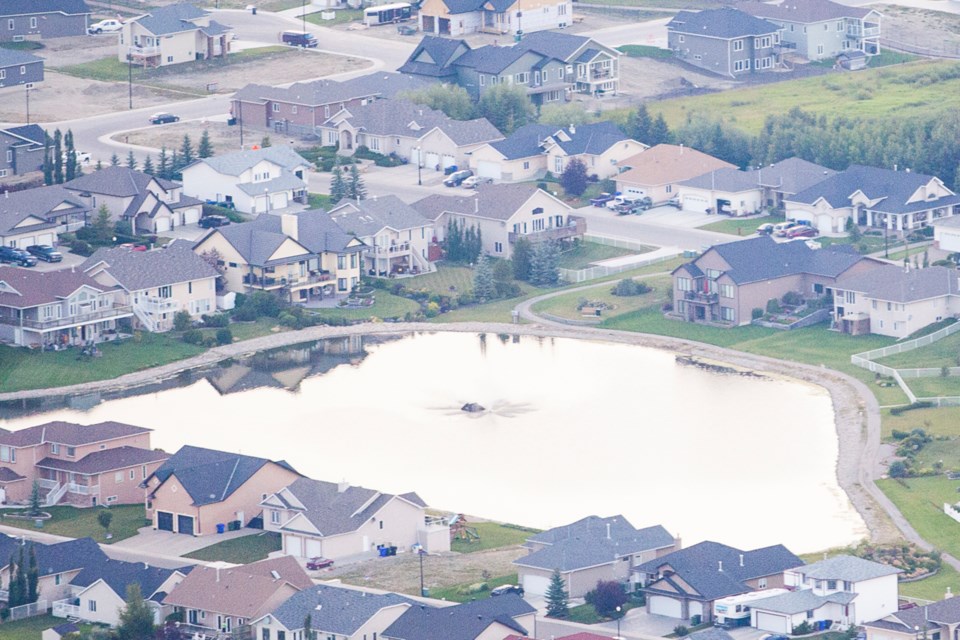OLDS — Mayor Judy Dahl is pleased that Olds has been ranked 52nd among the Globe & Mail newspaper’s top 100 most livable cities in Canada, but she has a bone to pick with some of their assessments of the community.
For one thing, Olds is not (yet, anyway) a city. It is still officially a town.
Also, the Globe & Mail ranking, published Nov. 25, states Olds’ population as being 10,102. According to the province’s regional dashboard website, as of last February, Olds’ population stood at 9,567. Statistics Canada had it as being 9,209 as of 2021.
“We are not aware of that population and I am curious and may seek the evidenced-based facts,” Dahl wrote in an email to the Albertan.
But nonetheless, Dahl was pleased with the recognition.
“Well deserved,” she wrote.
“Olds community has a strong and committed core of volunteers. Through good times and hard times, it is a community that IS the best place to live, as it builds family that supports each other in all areas.”
The ranking also says the likelihood of being beset by crime in Olds is 58 per cent below average.
Dahl agreed with that figure “for the reason neighbours do safety check on each other.
“We may have front attached garages. However, the difference is we do talk to our neighbours and know our neighbours,” she wrote.
The ranking listed diversity in Olds as 53 per cent below average.
Dahl had no comment on that observation, saying it’s “not clear.”
The Globe’s ranking listed Olds’ unemployment rate as being 7.6 per cent.
Dahl said she’d like to “see the facts” regarding that statistic.
The Globe & Mail said the average income in Olds is $99,028.
Dahl said it’s not clear if that figure is based on one income or two.
“In this world today (it) may take two salaries,” she wrote.
Dahl said she “100 per cent disagrees” with the Globe & Mail’s assessment that Olds is 45 per cent less walkable than the Canadian average.
“Olds has an amazing trail system (that links) north, south, east and west. We know all people cannot afford to own a vehicle and walk,” she wrote.
The Globe listed Olds’ top five industries as being retail trade, construction, health care and social assistance, educational services, accommodation and food services.
“What about manufacturing plants? It seems a lot of the industries are government based/dependent. Olds is much more,” Dahl wrote.
Olds’ top five occupations were listed as: sales and service, trades, transport and operators, business finance administration, management, social science, education government and religion.
“(It) takes more to build a community," Dahl wrote. “(It) is a good start but needs the culture side: music, arts & culture and recreation.”
Dahl was asked for her thoughts on several other assessments of the community in the Globe & Mail ranking.
For example, it said:
• 19 per cent of Olds residents spend more than 30 per cent on housing;
• 86 per cent have a regular health care provider;
• 66 per cent have a strong sense of belonging to a community; and
• the town has only 45 days with a temperature lower than -15 C.
Dahl did not respond to any of those observations.
She was asked if she had any other thoughts about the Globe & Mail’s assessment of the community.
“It takes trust and stability in culture with brilliant business sense and courage to build a community,” she wrote.
The Globe & Mail story with a byline of Mahima Singh and Chen Wang also contained the methodology by which communities were assessed and ranked.
“We’ve collected data about 439 cities across the country, each with a population exceeding 10,000,” the story said.
“Our evaluation involved an analysis of 43 variables, which span 10 categories that we’ve identified as particularly crucial when an individual contemplates relocating to a new area. These categories are Economy, Housing, Demographics, Health Care, Safety, Education, Community, Amenities, Transportation and Climate.
“For each variable, the data underwent rescaling to generate scores ranging from 0 to 1, based on each city’s ranking position. For example, Vancouver was the second-most walkable community and received a high score of 0.998, whereas Thunder Bay ranked 186 and received a lower score of 0.578.
“We identified certain categories as more important for people selecting a community to live in – such as Economy and Housing – and weighted them more heavily than less significant categories, such as Climate and Amenities.
“The same approach was applied to variables within each category; for instance, proximity to grocery stores was given more weight than proximity to libraries, recognizing the former’s greater impact on an average person’s quality of life.”



